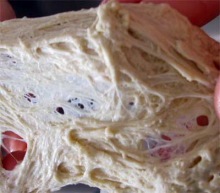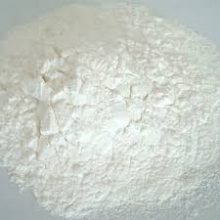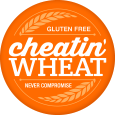- Jan 14, 2015
Gluten Free? Avoid wheat and and wheat by-products. It all seems so straightforward right? Yes, I know as well as you that there other ingredients to look for in order to be gluten free, but WHEAT is a big, bad word. Well, this is not necessarily the case. Products made from wheat starch, yes I did say wheat starch, are commonly eaten by celiac patients in some European countries. In addition, Dr. Schar has a gluten free croissant available that is made with gluten free wheat starch. Hmmm....
I know wheat flour is made up of approximately 70% starch, 15% protein, and 15% other things like moisture and lipids. For now, lets focus on the protein, 90% of which is what we refer to as gluten. "Gluten" is technically equal amounts of two smaller proteins, glutenin and gliadin. These proteins, namely the gliadin, are the culprits and what we are trying avoid on a gluten free diet. So, the starch of the grain is "technically" not problematic once separated from the gluten proteins. Let me see if I can explain how these two by-products are produced with a few simple equations.
Wheat Flour + Water + Agitation = Dough

Once you combine wheat flour with water and mix, you get activate gluten's ability to form a tight, web-like network that becomes insoluble in water thus creating dough.
Dough + Rinsing = Wheat Gluten and Wheat Starch

Thorough rinsing of this dough leaves the web of protein known as gluten behind.
Vital Wheat Gluten
If the remaining protein strands get dried and ground, it becomes vital wheat gluten.
Wheat Starch

The milky water that is captured during this rinsing gets repeatedly washed then dried resulting in a fine white powder we know as wheat starch.
Now, not all wheat starches are created equal and people following a gluten free diet should avoid most commercial wheat starch. However, there is wheat starch that is specifically manufactured to comply with the International Gluten Free Standard. It is known as CODEX Wheat Starch, and it meets the standards for gluten free labeling of 20 ppm. Some links for your perusal:
www.glutenfreedietitian.com/confusion-over-codex-standards-for-gluten/
www.dsglutenfree.com/en/gluten-free-living/coeliac-disease/codex-wheat-starch
www.ncbi.nlm.nih.gov/pubmed/10192194
Under 2013 FDA regulations for labeling, foods containing wheat starch can be labeled gluten free as long as the final food product contains less than 20 ppm of gluten. Wheat will be in the contains statement and wheat starch will be included the ingredient list. It may look something like "starch (Codex approved gluten free wheat starch)".
It may be a while before you even see products containing gluten free wheat starch available in the US. An article in the February issue of Gluten Free Living magazine has Boulder Brands (read Glutino and Udi's) going on record against using gluten free wheat starch since it is still an allergen and problematic for people who are wheat free instead of gluten free. It may be even longer before you decide to try them, if ever. However, we may just have to change the way we think about the word WHEAT.






 Find our products
Find our products FAQs
FAQs Testimonials
Testimonials R&D Projects
R&D Projects
Comments
I appreciated your article.
I appreciated your article. I am launching a gluten free all purpose flour made with gluten free wheat starch. The final product contains less than 5 parts per million of gluten and is a 1:1 substitute for traditional flour. The results are stellar, same taste, texture and performance of regular flour and superior to what is currently available in the US market. Thanks for the education piece..
What does ppm stand for in
What does ppm stand for in the article "Is Wheat Starch Gluten Free?"
Thanks
Sara
The ppm stands for Parts per
The ppm stands for Parts per Million and is used as a way to measure the quantity of gluten in a product. The most current standard is product has to contain less than 20 ppm in order to be labeled gluten free.